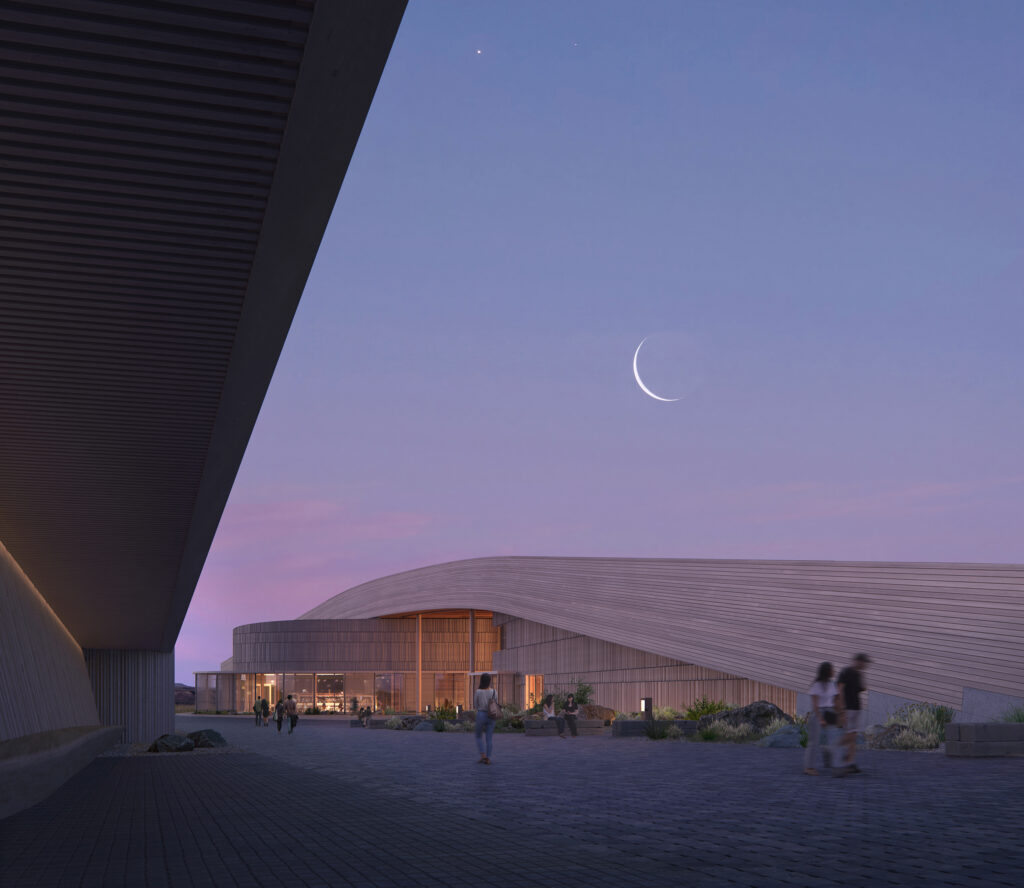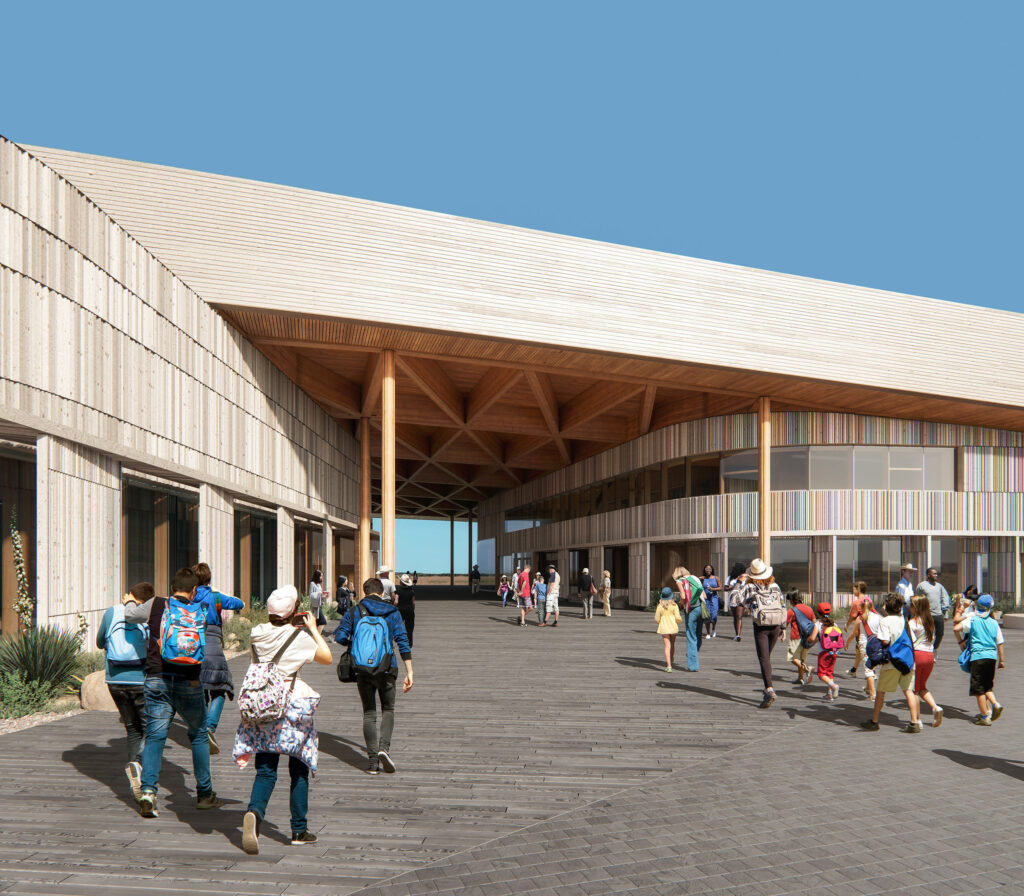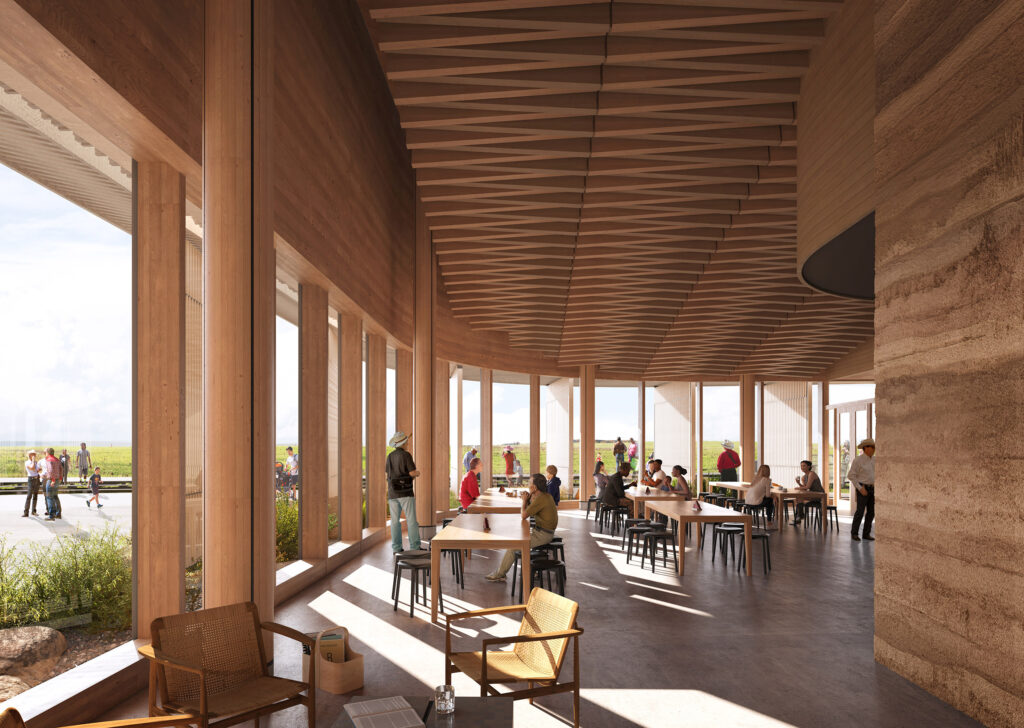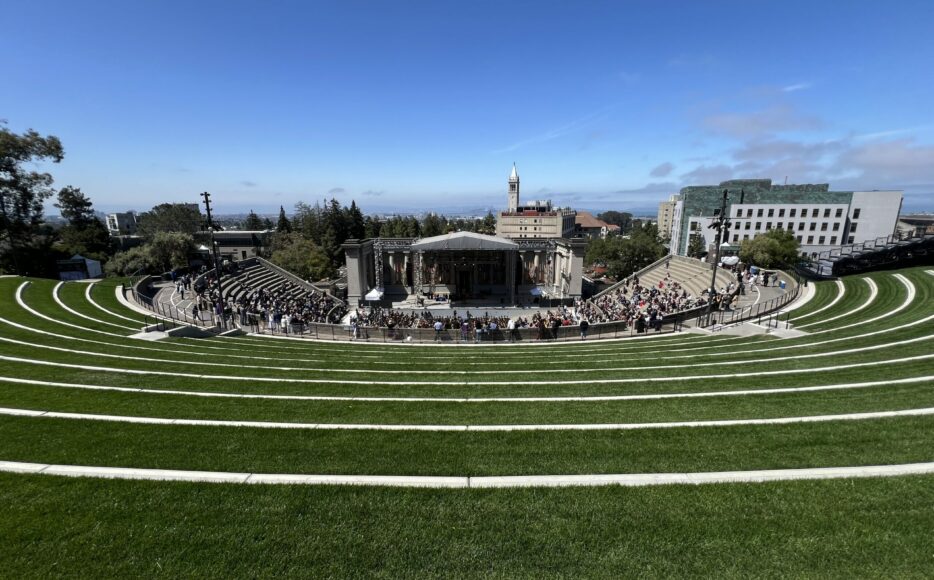The Theodore Roosevelt Presidential Library is currently under construction in the Badlands of North Dakota, inspired by the “conservation president’s” passion for nature and envisioned to be a model of self-sufficiency as it invites visitors to engage with the landscape and reflect.
Located adjacent to Theodore Roosevelt National Park, on a rugged yet significant site that served as Roosevelt’s personal sanctuary and shaped his vision for environmental conservation, the Library embodies four core values: dare greatly; think boldly; live passionately; and care deeply. Roosevelt himself once said, “Leave it as it is. The ages have been at work on it and man can only mar it.” This mission has motivated the project stewards and design team to create a destination that meets the International Living Future Institute’s (ILFI) Living Building Challenge and that operates as net positive for energy, water, emissions, and waste. Snøhetta’s architecture merges with the landscape, including an accessible rooftop—a gently sloping structure that flows seamlessly from the grasslands and over the Library—that not only serves as a living roof but also offers expansive vistas of the adjacent national park.

Sherwood’s team is serving as civil engineers on the project, designing an innovative wastewater treatment and reuse system, nature-based stormwater management system, and rigorous erosion control solutions for the Library’s exquisite site. Building on the firm’s global experience of bringing engineering challenges and ecologies in harmony with technical requirements—including multiple projects that meet the Living Building Challenge (LBC)—Sherwood has collaborated with the landscape, sustainability and ecology teams to design robust yet refined grading and engineering approaches that restore and enhance the natural landscape, while satisfying LBC and local jurisdictional requirements.
The Living Building Challenge’s water petal requires that the Library operate within the water balance of its place and climate, producing a net positive impact. As a result of Sherwood’s plan, 100% of stormwater that falls on the site will be managed on site through green infrastructure, and ultimately leveraged for the natural irrigation of the mesic prairie basins and the green roof.

In the Badlands, the natural landscape is highly erosive. It rains infrequently, but when it does, it’s torrential. As the site sits on a mesa, characterized by milder slopes on top with steep ravines on the site’s edges that convey stormwater downstream in a radial manner, stormwater velocities are critical to manage to mitigate erosion. To account for this, stormwater infrastructure is designed to mimic the landscape’s pre-development hydrology as water moves downstream. Through the site’s higher elevations, infrastructure is designed to slow down flows by prioritizing water infiltration with natural terraces and trenches, with increased storage in the site’s lower elevations via green infrastructure that incorporates nature-based processes for treatment of pollutants. Excess stormwater volumes eventually drain downstream in a controlled manner via the site’s ravines so as to not disrupt the natural hydrologic cycle downstream. While this biophilic design approach is grounded in function, components of the nature-based design are also intricately integrated within Snøhetta’s landscape to seamlessly blend in with the restored landscape to highlight the area’s unique placemaking characteristics.

Sherwood has also designed a closed-loop, onsite wastewater treatment system that collects all of the building’s wastewater and uses it for toilet flushing and irrigation. This water reuse strategy is designed to reduce the Library’s potable water use by more than 50% compared to a project without water reuse. Featuring a novel membrane bioreactor system provided by trade partner Innovatreat, the wastewater system will biologically treat then filter and disinfect the effluent to meet non-potable water quality standards. Three, 20,000 gallon storage tanks are located below grade outdoors and are carefully integrated with the landscape to minimize visibility and support the site’s natural setting. The other half of the treatment system is composed of fully-integrated, skid-based equipment located on a small footprint indoors to facilitate year-round maintenance access, including during North Dakota’s harsh winter.
Sherwood prioritizes ecological sensitivity and the alignment of design with nature, striving to create sustainable infrastructure that is beautiful, functional and responsive to a site’s context. Not code or regulatory driven, the engineering is driven by the land as the natural constraint and considers what’s best for its long term protection, safety and risk mitigation.
The Library is expected to open to the public on July 4, 2026.
| Location | Medora, North Dakota |
|---|---|
| Client | Theodore Roosevelt Presidential Library Foundation |
| Design Partners | Snohetta – Design Architect and Landscape Architect JLG Architects – Architect of Record Confluence – Landscape Architect of Record JE Dunn – Construction Manager |
| Size | 93 Acres |
| Status | Under Construction |


